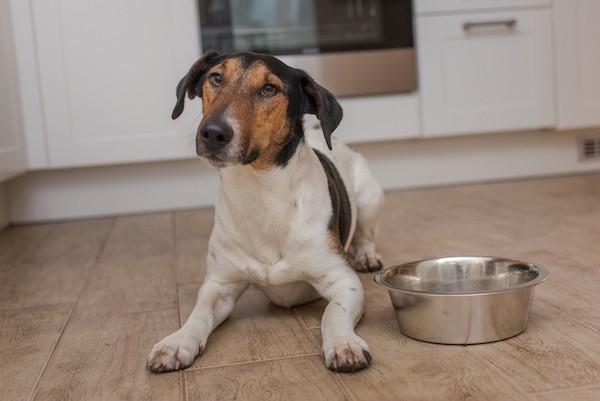Editor’s note: In April, we interviewed international dog rescuer Marc Ching about his day job as a herbalist, macrobiologist, holistic nutritionist, and owner of The PetStaurant, a natural wellness and pet food company based in Sherman Oaks, California. He joins the Dogster team as a regular contributor with this column. Please welcome Marc!
Does your dog throw up bile or frothy white and yellowish foam? If so, they are most likely struggling with acid reflux or upper gastrointestinal issues.
Most vets recommend Pepcid (famotidine) or antacids to treat the problem. However, they are more of a bandage that may suppress the symptoms rather than treat the underlying issue. Thousands of pet owners each year find themselves at the vet for GI issues with intermittent vomiting. While there are many possible causes, the most common is high acid levels, or digestive problems.

Marc Ching demonstrates how to make a holistic pet meal at The PetStaurant. (Photo courtesy Marc Ching)
Biling is the term we use to describe a situation in which your dog is throwing up white or yellowish foam. Undigested food sometimes can be thrown up as well. Most times, biling occurs in the middle of the night or in the early morning. However, some dogs can throw up bile in the middle of the day and at random moments.
Biling is a feeding problem. What we mean by this is that your dog is most likely going too long without food in their stomach. In the middle of the night, acid levels in the stomach can be very high, and the result is your dog throwing up bile.
A great way to try to fix the problem holistically is to change feeding times. Feeding three times a day in many cases is a great remedy to the problem. The recommended feeding schedule is feeding the first meal in the morning, the second when you get home from work, and the last meal an hour before bedtime. Feeding before bed is critical because it means that your dog will have food in their stomach throughout the night, which will naturally reduce acid levels.

Dog with empty food bowl. (Photo by Shutterstock)
In addition to feeding three times a day, supplementation is another way to assist in fixing and attending to specific gastrointestinal issues. Slippery elm is soothing to the intestinal tract and can be of great assistance. A more effective recommendation would be a probiotic supplement called Immunity. This multi-spectrum probiotic reduces GI inflammation, brings down gastric acid levels, and aids in the digestive process. As with all supplements, please consult your veterinarian before giving them to your dog.
As a believer in natural health, I often feel that if we seek to identify the cause, that specific disorders can easily be resolved. Throwing up acid or bile is a condition that in most cases can be remedied. We are what we eat, and our furry loved ones are no different.
The post Does Your Dog Throw Up Bile? appeared first on Dogster.
No comments:
Post a Comment